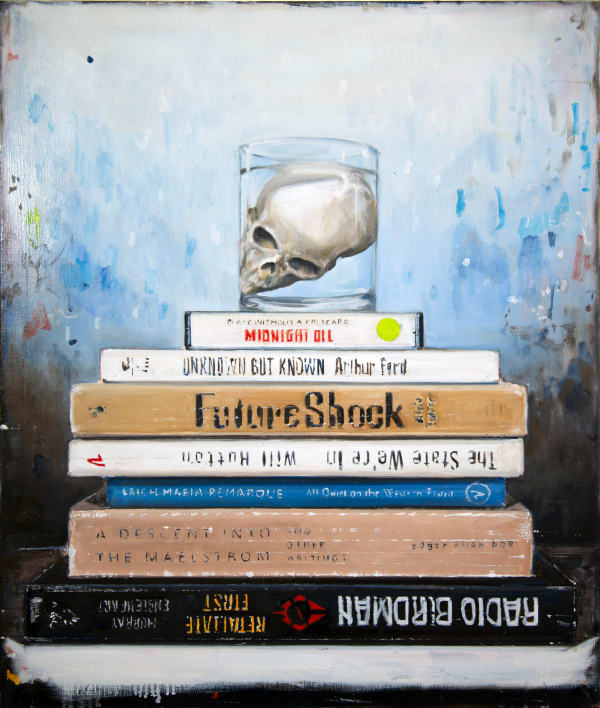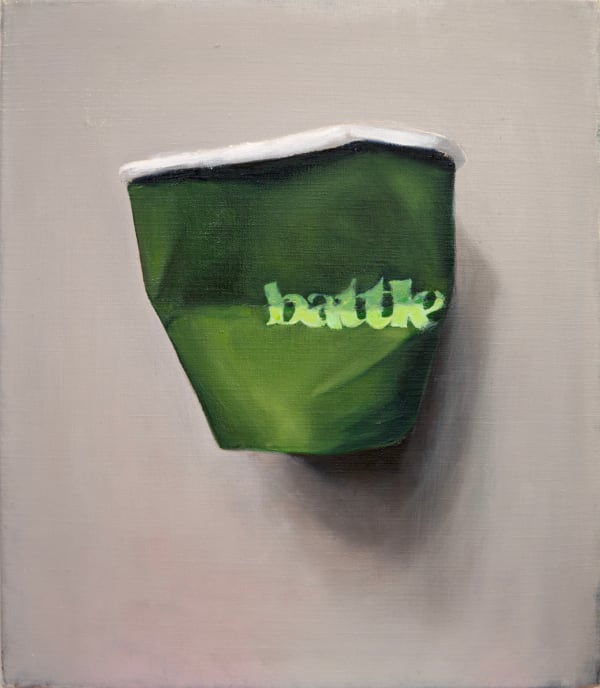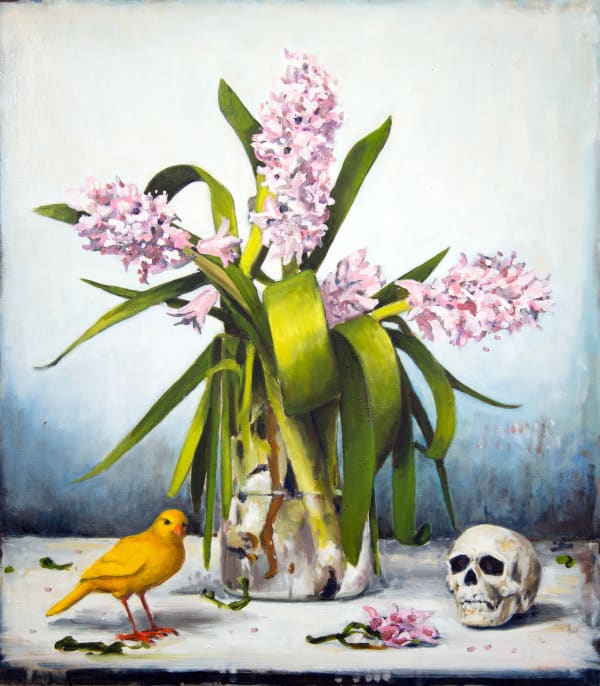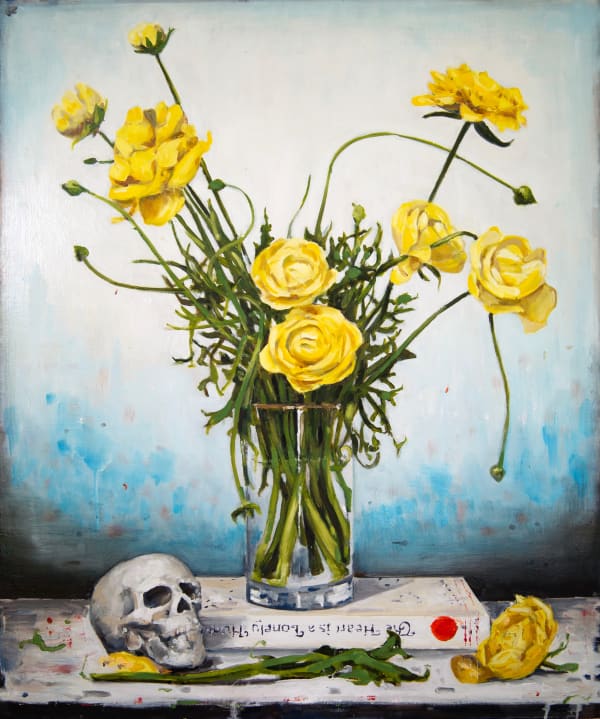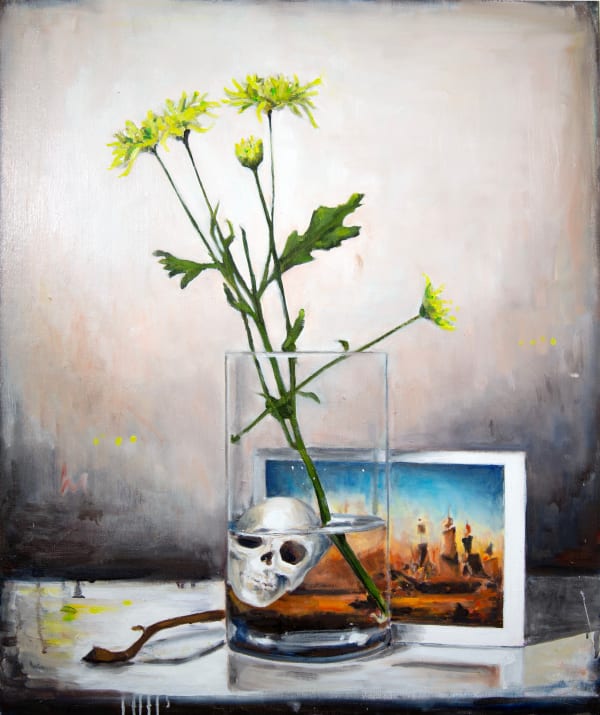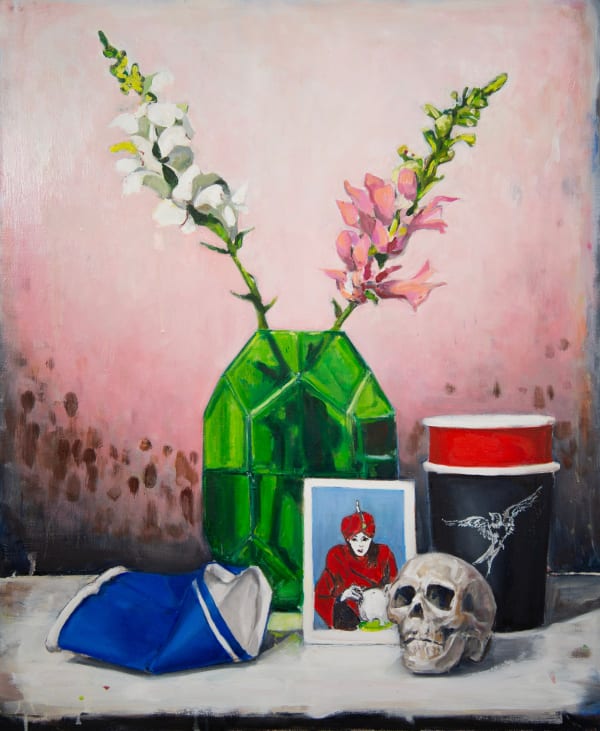Salvage: Fabrizio Biviano
Through the use of everyday objects, symbolic imagery, and thoughtfully composed paintings, Salvage invites viewers to engage with questions of mortality, memory, and meaning. The work does not offer easy answers but instead provides a space for reflection, asking us to look closely at the fragments of life we are often too quick to overlook.
Biviano’s Salvage explores themes of survival, loss, and the passage of time, drawing inspiration from Théodore Géricault’s Raft of the Medusa. This iconic work, with its depiction of human struggle amidst disaster, serves as a foundation for Salvage, where Biviano re-imagines the fragility of existence in a contemporary context. The exhibition is deeply rooted in the symbolic tradition of 17th-century Dutch vanitas painting, where everyday objects—flowers, skulls, and symbols of mortality—remind viewers of life’s impermanence.
In Salvage, Biviano expands on the vanitas genre by incorporating motifs from modern life. Carefully arranged compositions of coffee cups, postcards, and flowers take the place of traditional objects like hour glasses and fruit. These familiar items, while seemingly mundane, hold deeper significance. Coffee cups, for instance, represent both routine and fleeting comfort, while postcards evoke distant, perhaps fractured, connections. In this way, Biviano's crafted compositions bridge the personal with the universal, the present with the past, showing that the themes of vanitas are still deeply relevant.
Flowers play a significant role in Salvage, much as they did in vanitas paintings of the 17th century. In these earlier works, flowers often symbolized beauty, decay, and the fleeting nature of life. Biviano’s use of flowers preserves this symbolic power but also brings a contemporary sensibility, presenting them as both delicate and enduring elements within the compositions. The juxtaposition of the fragile flowers with objects like skulls emphasizes the contrast between life’s transient moments and its more enduring realities, offering viewers an opportunity to reflect on the tension between beauty and decay.
The paintings in Salvage are meticulously composed, with every element intentionally placed to evoke contemplation. Biviano’s compositions are crafted with a precision that invites viewers to engage with each detail—nothing is arbitrary. The objects, whether a skull or a coffee cup, are selected not only for their symbolic value but also for how they function together within the larger narrative of the work. This sense of careful arrangement imbues the paintings with a quiet sense of order, even as they grapple with themes of chaos and uncertainty.
The concept of salvaging, both physically and metaphorically, is central to the exhibition. Each object within the compositions feels as though it has been saved from the wreckage of life, deliberately chosen for preservation. In today’s world, shaped by consumption and political uncertainty, Salvage prompts viewers to consider what we choose to hold onto and what we discard. The exhibition speaks to the tension between salvaging what we need for survival versus what we want for personal fulfilment. The coffee cups and postcards, for example, symbolize connections and comforts that may seem insignificant, yet they are the very things we often cling to in times of crisis.
This concept is further explored in Biviano’s depiction of skulls, a traditional memento mori. In Salvage, the skulls are not just reminders of mortality but also of the forgotten. They represent lives and stories that have been erased by the forces of politics and consumption. In the face of economic and social upheaval, many are left behind, their memories fading into obscurity. Through the use of these symbols, Biviano asks viewers to reflect on what is truly valuable in life and to question what we are willing to salvage from the debris of history.
The painted backgrounds of Salvage feature transitions in colour, subtly shifting from light to shadow, or from vibrant to muted tones. These transitions mirror the passing of time and memory, evoking a sense of gradual change rather than abrupt shifts. The colours, though restrained, offer a quiet commentary on the cyclical nature of life, encouraging viewers to reflect on the ways memories fade and time softens even the sharpest moments of experience.
Biviano’s exploration of vanitas in a modern context offers a meditation on the act of salvaging itself. The carefully arranged compositions of Salvage suggest that what we choose to preserve — whether objects, memories, or relationships — shapes our understanding of what is valuable. In a world where consumption dominates and much is discarded, the exhibition challenges viewers to consider what is truly worth holding onto.
Through the use of everyday objects, symbolic imagery, and thoughtfully composed paintings, Salvage invites viewers to engage with questions of mortality, memory, and meaning. The work does not offer easy answers but instead provides a space for reflection, asking us to look closely at the fragments of life we are often too quick to overlook. Biviano’s careful attention to detail and composition encourages contemplation of the beauty and significance found even in the most fleeting of moments, reminding us that what we choose to salvage defines who we are and what we leave behind.




